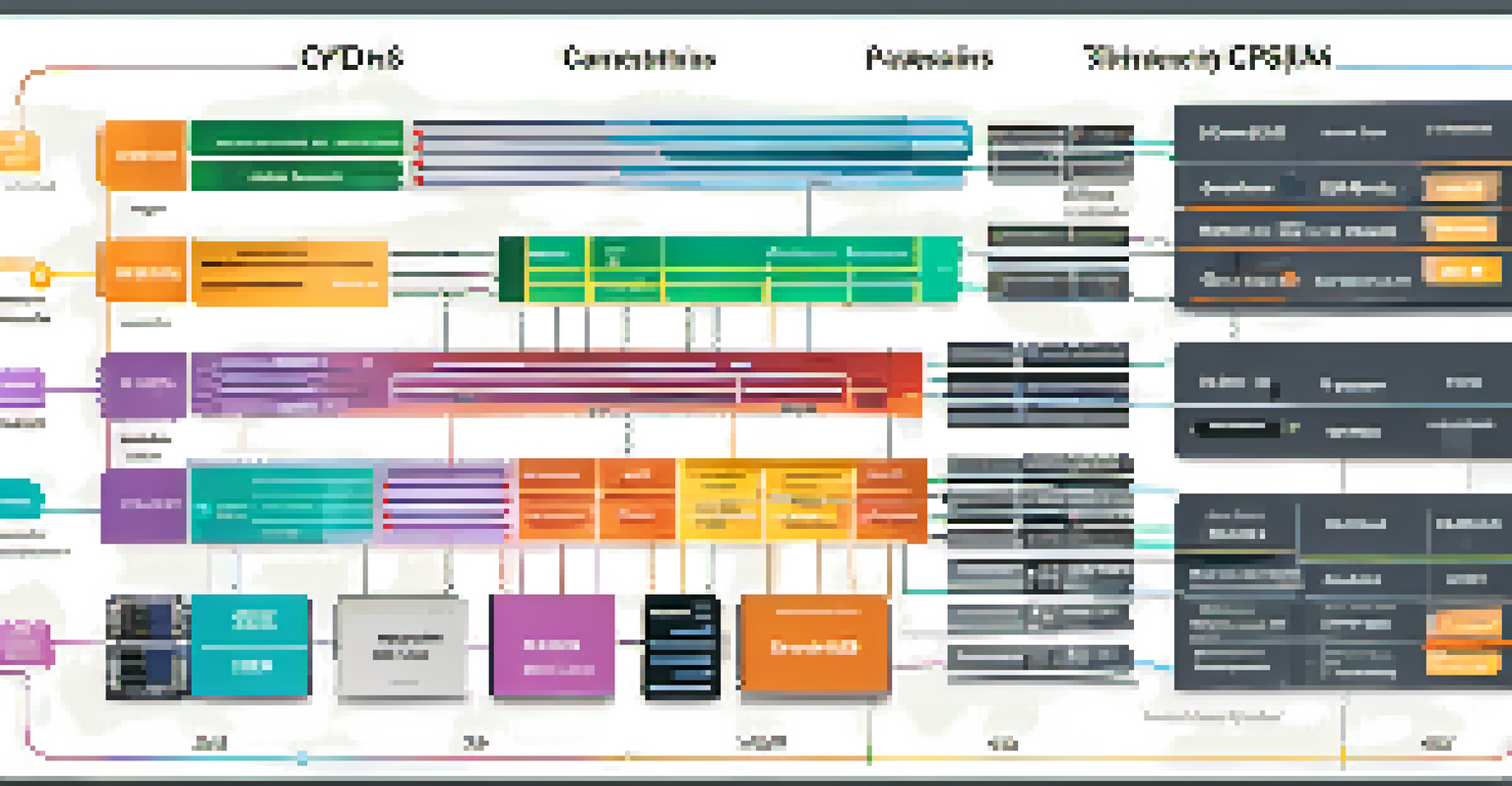The Role of ASICs in Modern Cryptocurrency Mining Explained

What Are ASICs and Their Purpose in Mining?
ASIC stands for Application-Specific Integrated Circuit, and these are specialized devices designed for a particular application. In the world of cryptocurrency mining, ASICs are engineered specifically to mine coins like Bitcoin. Unlike general-purpose hardware, such as CPUs or GPUs, ASICs offer unparalleled efficiency and speed in solving complex mathematical problems required for mining.
The greatest danger in times of turbulence is not the turbulence; it is to act with yesterday's logic.
The primary purpose of ASICs is to streamline the mining process. Because they are optimized for specific algorithms, they can perform calculations much faster than their more versatile counterparts. This acceleration allows miners using ASICs to solve blocks more quickly, thereby earning rewards more frequently and enhancing profitability.
In essence, ASICs have become the gold standard in cryptocurrency mining due to their efficiency. For miners serious about maximizing their returns, investing in ASICs is often a no-brainer. As the crypto landscape continues to evolve, the role of ASICs remains pivotal in maintaining a competitive edge.
How Do ASICs Compare to Other Mining Hardware?
When comparing ASICs to other hardware like CPUs and GPUs, the differences are striking. CPUs, or Central Processing Units, are designed for general-purpose tasks, making them versatile but not efficient for mining. On the other hand, GPUs, or Graphics Processing Units, are better suited for parallel processing tasks but still fall short against ASICs in terms of raw power and energy efficiency.

ASICs provide significant advantages over GPUs, particularly in terms of hash rates. A hash rate measures how many calculations a miner can perform per second when trying to solve a block. ASICs can produce thousands or even millions of hashes per second, vastly outpacing GPUs, which makes them far more effective for competitive mining.
ASICs Boost Mining Efficiency
ASICs are specialized devices designed specifically for mining cryptocurrencies, offering unmatched speed and power compared to traditional hardware.
While ASICs may come with a higher upfront cost, the long-term benefits in terms of efficiency and earnings often outweigh this initial investment. This is why many miners have transitioned from GPUs to ASICs, especially as the mining landscape becomes more competitive.
The Efficiency of ASICs in Cryptocurrency Mining
Efficiency is a crucial factor in cryptocurrency mining, and ASICs excel in this area. These devices are designed to consume less power while delivering maximum performance, which is vital given the high energy costs associated with mining. For instance, an efficient ASIC can yield more hashes per watt than a traditional GPU setup, making it a more sustainable choice.
In the world of technology, everything is evolving at a rapid pace, and those who do not adapt will be left behind.
Moreover, the efficiency of ASICs not only impacts profitability but also affects the environment. As miners are pushing for greener practices, ASICs can help reduce the carbon footprint associated with mining activities. This shift towards more energy-efficient mining solutions resonates with a growing number of environmentally conscious individuals and organizations.
In summary, ASICs represent a significant advancement in mining technology, allowing miners to maximize their output while minimizing energy consumption. This efficiency is one of the key reasons ASICs have become so prevalent in the cryptocurrency mining industry.
The Evolution of ASIC Technology in Mining
The journey of ASIC technology in cryptocurrency mining has been fascinating. Initially, mining was accessible to anyone with a computer, and miners used CPUs to solve blocks. As competition increased, miners began using GPUs, which offered better performance until ASICs entered the scene, revolutionizing the industry.
Since their inception, ASICs have undergone significant advancements. Today's models are faster, more energy-efficient, and capable of handling more complex mining algorithms than ever before. This constant evolution ensures that miners who invest in the latest ASIC technology can stay competitive in a rapidly changing market.
Higher ROI with ASIC Investments
Despite the initial costs, investing in ASICs can lead to higher returns due to their efficiency and ability to solve blocks quicker than other mining hardware.
Looking ahead, we can expect further innovations in ASIC technology, potentially leading to even more efficient devices. As the demand for cryptocurrency continues to grow, so too will the need for advanced mining solutions, making ASICs an integral part of the future of mining.
The Cost of ASICs and ROI Considerations
Investing in ASICs can be a significant financial commitment, with prices ranging from a few hundred to several thousand dollars. Therefore, understanding the return on investment (ROI) is crucial for miners. Factors such as electricity costs, mining difficulty, and cryptocurrency market prices play a significant role in determining how quickly a miner can recoup their initial investment.
To evaluate ROI, miners often analyze their expected earnings against operational costs. For example, if an ASIC can generate a certain amount of cryptocurrency daily, miners must calculate how long it will take to cover the purchase price and ongoing electricity costs. This analysis helps them make informed decisions on whether or not to invest in specific ASIC models.
Ultimately, while ASICs may require a hefty upfront investment, the potential for high returns can make them worthwhile. The key is to conduct thorough research and stay informed about market trends to maximize profitability.
Challenges and Limitations of ASICs in Mining
Despite their advantages, ASICs are not without challenges. One major limitation is their lack of versatility; they are designed for specific algorithms and cannot adapt to mine different cryptocurrencies. This focus means that if the algorithm changes or if a miner wants to switch currencies, they may need to invest in new hardware.
Another challenge faced by ASIC miners is the intense competition. As more miners adopt ASIC technology, the mining difficulty for popular cryptocurrencies like Bitcoin increases, making it harder to earn rewards. This rising difficulty can sometimes outpace the efficiency gains offered by newer ASIC models, leading to diminishing returns for miners.
ASICs Face Competitive Challenges
While ASICs dominate the mining landscape, they are not without challenges, including limited versatility and increasing competition that can affect profitability.
Lastly, the environmental impact of ASIC mining cannot be overlooked. While newer models are more energy-efficient, the overall energy consumption of mining still raises concerns. Miners are increasingly looking for ways to balance profitability with sustainability, which may influence future ASIC designs and mining practices.
The Future of ASICs in Cryptocurrency Mining
As we look to the future, ASICs are poised to remain a dominant force in cryptocurrency mining. The ongoing development of more efficient and powerful models will continue to attract miners seeking to maximize their returns. Furthermore, as the cryptocurrency market evolves, so too will the algorithms these ASICs are designed to solve.
In addition, the push for sustainable mining practices may drive innovation in ASIC technology. Manufacturers could focus on creating devices that not only deliver high performance but also minimize environmental impact, thereby appealing to eco-conscious miners. This trend could reshape the industry, making it more responsible and sustainable.

Finally, the regulatory landscape surrounding cryptocurrencies will also play a role in the future of ASICs. As governments worldwide develop policies to govern cryptocurrency mining, ASIC technology may need to adapt to comply with new regulations. This adaptability will be crucial for the long-term viability of ASICs in the ever-changing world of cryptocurrency.